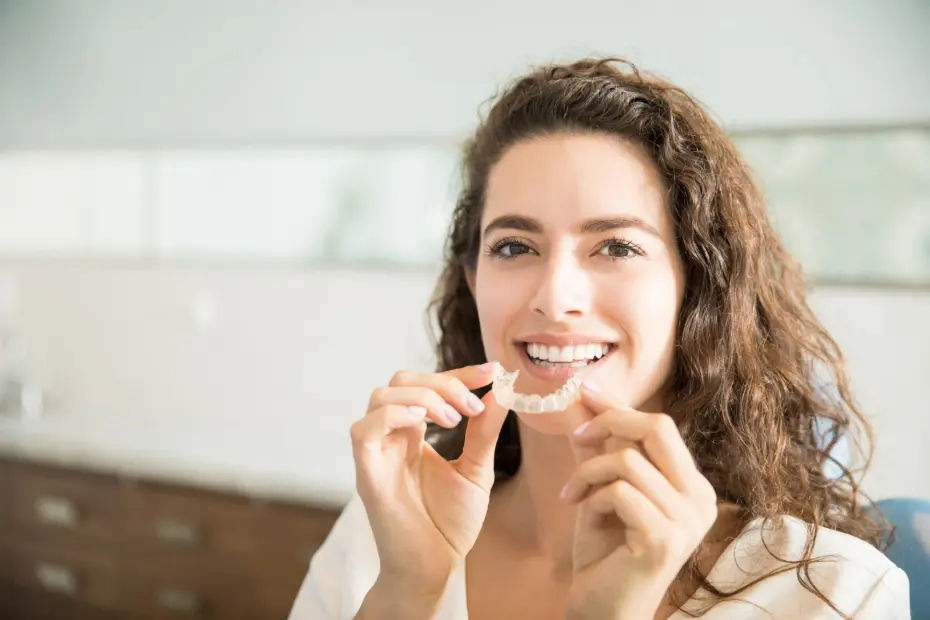Have you ever been in front of the mirror and seen that your teeth are crooked or that your bite is slightly off?
You’re not alone—and you don’t have to settle for it. A braces specialist or an orthodontist is specifically trained to correct such problems.
Whether it's an overbite, underbite, or crowding of gaps, they will use tailor-made treatment plans to bring your teeth in line slowly and gradually.
The result?
Not just a straighter smile but better oral health, better speech, easier chewing, and even relief from jaw pain. With today’s high-tech choices, such as clear aligners and ceramic braces, a confident smile is more achievable than ever before and peskily under the radar.
Let’s find out how a braces specialist can change your bite, straighten your teeth, and give you the healthy, confident smile you deserve.
1. Customized Treatment Plans
When you visit a braces specialist, they don’t just apply a one-size-fits-all approach; they evaluate the dental history of a patient. The orthodontist examines the patient’s face and teeth structure with specialized equipment like X-rays, digital scans, and physical impressions.
All this aids in identifying precisely what is responsible for the alignment or bite issue. After the evaluation is complete, they design a treatment plan that is not generic but based on the dental anatomy of the patient.
The patient might be provided with standard braces, clear aligners, or other orthodontic appliances, receiving specific intervention for specific challenges. Having such an approach increases the effectiveness of treatment and often reduces the time needed to complete it.
2. Correcting Malocclusions

Malocclusion refers to the improper alignment of teeth when the jaw is closed. For example, as a patient, you might experience anything from difficulty chewing to jaw soreness or even speech delays.
These are all manageable conditions, and braces specialists are trained people who can help. The orthodontist uses braces and other appliances to slowly reposition your teeth, whether you're dealing with an overbite, underbite, crossbite, or open bite.
It is more than a cosmetic concern; it concerns integrating the functions of the jaws and the teeth. With proper care and orthodontic therapy, one’s bite is likely to become more efficient and functionally balanced.
Taking care of your malocclusion prevents the possibility of more severe dental problems like enamel deterioration, gum line receding, or TMJ issues. In the end, you will be left with a well-aligned jaw and a better smile.
3. Improving Jaw Alignment
Misaligned jaw might lead to difficulty in chewing, headaches, jaw pain, facial numbness, or facial asymmetry. A braces specialist can offer corrective orthodontic help.
The comparison of the position of the upper and the lower jaw during the consultation will aid in establishing whether or not there are alignment problems. In some cases, the specialists may even prescribe the use of elastics, headgear, jaw expanders, and work with oral surgeons if jaw correction surgery is necessary.
Such devices operate with braces or aligners and are used to put the jaw in a more balanced and healthy state in the long term. Realigning the jaw helps shape the facial structure, enhancing bite and general oral body functions.
When properly used, with consistent care and visits, it can alleviate discomfort and thus be helpful in forestalling more severe issues such as a TMJ disorder, unequally aged teeth, or teeth grinding.
4. Preventing Long-Term Dental Issues
Teeth and bites out of alignment not only result in physical and cosmetic issues, but they also contribute to greater concerns. As a patient, you may fail to realize the way in which an improper bite can accelerate the rate of wear and tear on your teeth by increasing the chances of chipping, cracking, or true erosion of your teeth.
Poor bite, in turn, places extra stress on the jaw joints, making the individual at a higher risk of having Temporomandibular Joint (TMJ) Disorders. Crowded and crooked teeth cause gum problems as well because they are hard to maintain, and therefore, plaque and cavities accumulate.
Through the realignment of your teeth in a manner that settles the bite in the best possible oral function, a braces specialist can ensure that such problems do not occur. Appropriate orthodontic care not only improves your smile but also saves your gums, jaw, and teeth from harsh dental procedures in the future.
5. Monitoring Progress and Making Adjustments

Like any other medical procedure, orthodontic treatment entails a set of actions that need to be scheduled over a period of time; it is not a one-off event. You, as a patient, will be required to visit your orthodontist regularly, who specializes in braces for routine interventions and checks.
The orthodontist checks to see whether your teeth are on track to meet the treatment goals. X-rays, braces, and aligners all need to be updated. Moreover, wireless and elastics may need retightening to ensure precise structuring during these actions.
Extractions or additional space may result due to missing these appointments, such as routine check-ups or frequent adjustments meant to optimize the process. These appointments serve as a means to gather data, which may include questions, discomfort, or concerns that prompt improvement.
Conclusion
Deciding to visit a braces specialist is a smart move to take in order to gain a healthier and more confident smile. With individual care, professional corrections of bite and jaw problems, and periodic checking, you’ll get treatment that’s designed with you in mind.
Not only will you make your smile prettier, but you will also avoid extensive future dental issues that can influence your overall well-being. Under the advice of a good orthodontist, you are not just fixing your teeth; you are investing in your health.
Thus, make that first step to better bite and alignment. It will be worth it when your future smile rewards you for it.